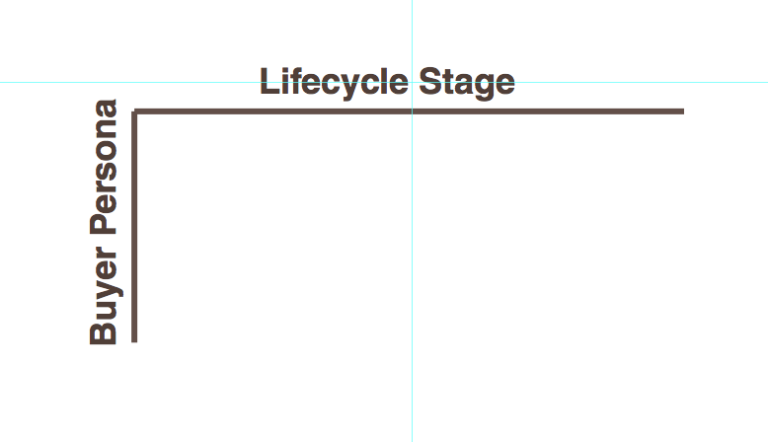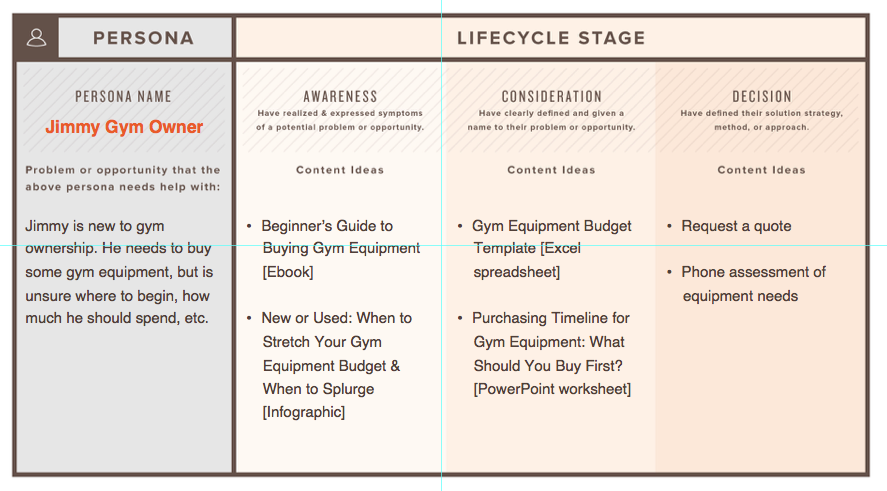Content Creation
Don’t try to compensate for low quality with high quantity content. You’ll do yourself more harm than good —readers won’t regard your content well, and as a result, Google won’t hold your domain in high regard, either.
Additionally, if you’re resource-strapped, there’s a blogging volume sweet spot you can rest comfortably in. 92% of businesses that blog multiple times a day have acquired one customer from it. But 78% of businesses that blog once a day have also acquired a customer from it. That differential isn’t too big.
And if we bring down the volume just a tad to 2-3 times per week, still, 70% of business acquire a customer from their blog.
So create content and do it consistently.
Content Mapping
When it comes to content, one size rarely fits all. To ensure that your company’s content is effective at generating and nurturing leads, you need to deliver the right content, to the right people, at the right time. Content mapping is the process of doing just that.
With content mapping, the goal is to target content according to A) the characteristics of the person who will be consuming it (that’s where buyer personas come in), and B) how close that person is to making a purchase ( i.e. their lifecycle stage).
Buyer Personas
Buyer personas are fictional, generalized representations of your ideal customers. They help you understand your customers (and prospective customers) better, and make it easier for you to tailor content to the specific needs, behaviors, and concerns of different groups.
The strongest buyer personas are based on market research as well as on insights you gather from your actual customer base (through surveys, interviews, etc.). Depending on your business, you could have as few as one or two personas, or as many as 10 or 20. If you’re just getting started with personas, don’t go crazy! You can always develop more personas later if needed.
When developing buyer personas, here are some of the questions you should think about:
- What is their demographic information?
- What is their job and level of seniority?
- What does a day in their life look like?
- What are their pain points? What do you help them solve?
- What do they value most? What are their goals?
- Where do they go for information?
- What are their most common objections to your product/service?
Lifecycle Stages
The buyer persona you target with your content is just one half of the content mapping equation. In addition to knowing who someone is, you need to know where they are in the buying cycle ( i.e. how close are they to making a purchase?). This location in the buying cycle is known as a lifecycle stage.
For the purposes of this template, we’re divvying up the buying cycle into three lifecycle stages: Awareness, Consideration, & Decision.
- Awareness: In the awareness stage, a person has realized and expressed symptoms of a potential problem or opportunity.
- Consideration: In the consideration stage, a person has clearly defined and given a name to their problem or opportunity.
- Decision: In the decision stage, a person has defined their solution strategy, method, or approach.
To help you map out content topics by buyer persona and lifecycle stage, we’ve put together a simple grid system.

Your buyer persona (plus a key problem or opportunity that persona needs help with) goes on the y-axis, while the three lifecycle stages are fixed on the x-axis.
Here’s a blank template, use a new blank template to map out content for each problem or opportunity that your buyer personas need help with.

Here is an example of how to fill out the Content Mapping form.
Persona: Jimmy Gym Owner
Problem or opportunity: Jimmy is new to gym ownership. He needs to buy some gym equipment, but is unsure where to begin, how much he should spend, etc.
Awareness Content ideas:
- Beginner’s Guide to Buying Gym Equipment [Ebook]
- New or Used: When to Stretch Your Gym Equipment Budget & When to Splurge [Infographic]
Consideration Content Ideas:
- Gym Equipment Budget Template [Excel spreadsheet]
- Purchasing Timeline for Gym Equipment: What Should You Buy First? [PowerPoint worksheet]
Decision Content Idea:
- Request a quote
- Phone assessment of equipment needs
Here is an example of what your Content Mapping form should look like filled out.

Blogging
Companies that blog 15 or more times a month get 5x more traffic than those that don’t. Moral of the story? If you care about traffic and leads, you need to care about blogging and content creation. And it’s not a matter of simply “doing it whenever you can.” Companies that increase their monthly blog post count from 5 to 8x per month double their lead generation. Frequency matters!
You’ve probably seen the stats: Businesses that regularly blog receive 55% more web traffic and 70% more leads than those that don’t. Why? Because blogs are like chum for Google and other search engines. They’re the bait that reels in customers when they’re searching the Web for the products and services that you offer.
But blogging is more than that. Frequent blog posts on your specialty will enhance your reputation and make you a recognized expert in your field. Not only will customers and clients be impressed, you’ll likely see your blog cited by other bloggers. Even traditional news reporters will be calling you. Blog and they will find you. That’s how inbound works.
Journalistic Copy
Journalism used to be about smoke-filled rooms with scholars banging away on typewriters. The sound of the carriage returning for the start of a new line drowned out only by the ringing of the telephone with the latest story to be told. In 2013, however, with declining newspaper and magazine subscriptions, and fewer jobs, we ask, “where have all the journalists gone?”
They’ve found new homes in the world of inbound marketing. Never before has storytelling played such a critical role in the success of a company’s marketing strategy. With so much information available to us all the time, it’s the brands that create an experience through storytelling that ultimately win with consumers. Journalists are still here. Many of us have simply moved our bylines to our own blogs or entered the marketing forum.
Visual Content
Visual content has to convey an idea at a glance. It also has to raise enough emotion that the person seeing it will share it. Think of Someecards, meme’s or infographics — have you ever shared one of these on your Facebook or LinkedIn pages. Visual content has to stand on its own, without keywords, to do this it has to:
- Ring true with your audience
- Have an element of humor, surprise or even anger
- Your company has to have an open social business culture
A social business understands that when it has employees who will contribute company content through external and internal engagement, inbound marketing comes naturally. This raises customer expectations, employee productivity, and innovation. In turn, the transparency in which a social business operates its brand(s) positions it better to spark visual content through social channels.
Dynamic Content
Dynamic content is content that caters specifically to the viewer, letting you provide relevant information whether they’re a prospect, lead, or even a returning customer. As a result, it provides the opportunity for you to be a champion of “context” — providing the right content at the right time.
Dynamic content is an extremely important component of inbound marketing. As marketers, we want to make sure we’re reaching the learners at the Top of the Funnel (ToFu), shoppers in the Middle (MoFu), and buyers at the bottom (BoFu), and provide the right content or calls-to-action to nurture them into customers and evangelists.
Dynamic content lets us reach each of those types of viewers with the right content, at the right time. We make the entire buying cycle more efficient whenever we use dynamic content.